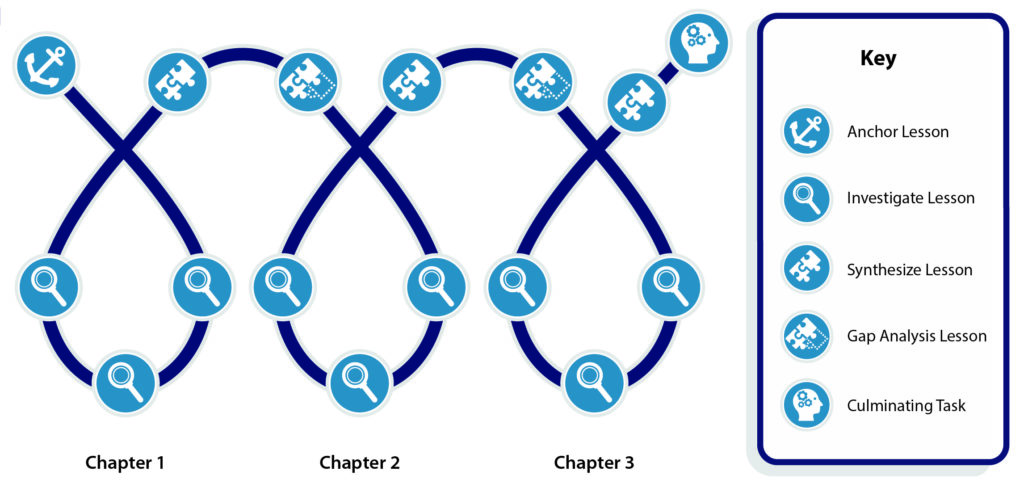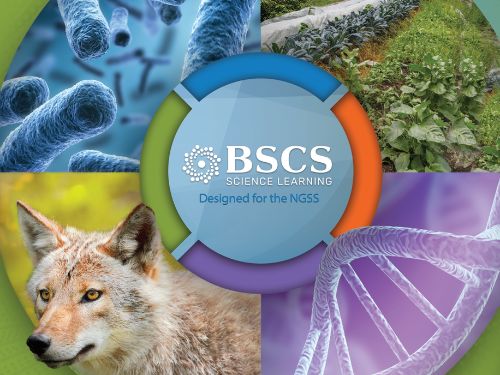Anchored Inquiry Learning: The Next Innovation in BSCS’s Instructional Design
At BSCS, we have the opportunity to work closely with K-12 science teachers all over the country. Each year, we meet teachers who want to tap into students’ interests and ideas about the world around them. We meet teachers who want to engage students in meaningful ways. And we meet teachers who want to make a lifelong impact on their students.
One important way we support teachers is by offering outstanding, research-based instructional models.
We have developed a new model that builds on the strengths of our globally-recognized 5E model, while drawing on contemporary research about the social, cultural, and emotional aspects of the learning process.
It’s called Anchored Inquiry Learning.
Three Key Goals
Our Anchored Inquiry Learning (AIL) model is designed to provide learners with motivated and coherent learning experiences. The model has three key goals:
Motivate students to learn
Student learning is anchored in a relevant problem they’ll solve or in interesting phenomena they’ll explain.
Engage students in productive learning activities
Students conduct investigations and generate the majority of the information that they need to construct their own understanding of science. This represents inquiry learning.
Prepare students to organize and reinforce their learning beyond the classroom
Students apply their understanding by using science ideas to explain new and related phenomena.
New Approach, New Classroom Experience
Anchored Inquiry Learning builds directly on the 5E model and carries forward the emphasis on learning through inquiry that has been central to BSCS’s instructional models throughout our history. Like our 5E model, AIL is teacher- and student-friendly. It’s predictable, while flexible for in-the-moment adaptation.
But AIL is so much more, too. Given this dramatic shift, AIL may feel new or different for teachers and students. For example, teachers and students will:
- spend more time investigating phenomena deeply. Units of instruction will target larger bundles of standards and take longer to complete.
- set a goal for learning that is motivated by students’ curiosities and ideas about phenomena. Students’ questions will drive much of their learning experience and help students create a coherent science and content storyline.
- share discussions that make student thinking visible through revision on individual models and class consensus models.
- work together in a community to figure out science ideas through argumentation and other collaborative sense-making activities.
- continuously reflect on where they’ve been, where they’re going next, and why?
- not ‘practice’ science skills. Rather, students will engage with science and engineering practices continuously and flexibly throughout a unit to “figure out” concepts and to explain phenomena or design solutions.
- struggle, but productively. Students will confront limits in their understanding which can be used to identify where to go next. They will develop skills to take action for themselves, their families, and their communities.
Anchored Inquiry Learning in Action
Our first curriculum project using the AIL model is a flagship biology program: BSCS Biology: Understanding for Life. The program is centered around four units, all of which address a pressing societal challenge through Anchored Inquiry Learning.
Here is how AIL guides the learning experience during the “coyote unit” (as students like to call it):
A group of high school students are in biology class trying to make sense of why coyotes are everywhere these days–in remote regions, suburban neighborhoods, and even in the middle of bustling cities. This is puzzling to them because so many animal populations seem to struggle with humans, but not coyotes. For weeks, they investigate. What they learn are new understandings of biodiversity, ecosystem interactions, natural selection, human impact, and conservation. How they learn is by planning and carrying out investigations, using mathematics and computational thinking, analyzing and interpreting data, and engaging in other activities called for by today’s rigorous science standards. And then they are prompted to do something with their new understanding. They are prompted to use and contribute to citizen science data and make a plan to conserve or increase biodiversity in landscapes changed by humans well after the unit has ended.
That’s Anchored Inquiry Learning in action.
More details, please!
In developing Anchored Inquiry Learning, we drew upon several new and innovative phenomenon-driven instructional models—for example, those used by Next Generation Storylines, Inquiry Hub, and the OpenSciEd program. While AIL shares some similarities with these programs, AIL has new and unique features which allow teachers flexibility to adapt instruction to meet the needs of all their students.
An AIL unit of instruction features a pattern of inquiry cycles (loops in the diagram below) composed of five lesson types. The unit is bookended by the Anchor Lesson and the Culminating Task Lesson. An inquiry cycle begins with a series of Investigate Lessons where students figure out key science ideas and crosscutting concepts through engagement with the science and engineering practices. The inquiry cycle culminates with a Synthesize Lesson where students build consensus and revise their explanatory model or solution to a problem. Before entering the next inquiry cycle, the Gap Analysis Lesson helps students re-engage with the anchoring phenomenon or problem by considering limitations in their understanding, motivating the need for more information and evidence.

Learn more about AIL Lesson Types
Each lesson type is characterized by a sequence of classroom routines. These routines are a unique feature of AIL that we believe capture the essence of phenomenon-driven inquiry learning in science. The routines form the core of the instructional model from which all lessons and units are built. They are called routines because they are the kinds of activities that occur regularly in a science classroom using AIL. For students, repeated use of the routines provides predictable structure and reveals connections allowing them to construct a coherent science content storyline. As teachers achieve more comfort with routines, they can more flexibly move between them to adjust instruction for all of their students.
The AIL routines guide classroom learning activities and include:
- Exploring a phenomenon or problem
- Sharing initial ideas from what we already know
- Drawing upon, or broadening, to prior experiences and knowledge to expand our thinking
- Asking, organizing, and answering questions
- Gathering evidence, which includes planning and carrying out evidence-gathering tasks.
- Generating an explanation, model, argument, or solution from evidence
- Defining gaps in what we understand to motivate further investigation
- Generalizing science ideas we’ve figured out to explain related phenomena
- Reflecting on our learning progress and process
- Navigating between activities and lesson to maintain coherence and continuity
- Applying understanding to plan for or carry out actions towards solutions
Where are we headed next?
Our work on AIL is not complete. We’ve only just begun. We are introducing it with BSCS Biology: Understanding for Life, and expect to continue refining this model as we engage in new uses of it across our curriculum programs. We look forward to sharing these updates with you as our knowledge and understanding of AIL grows!
Join our email list to stay updated.

